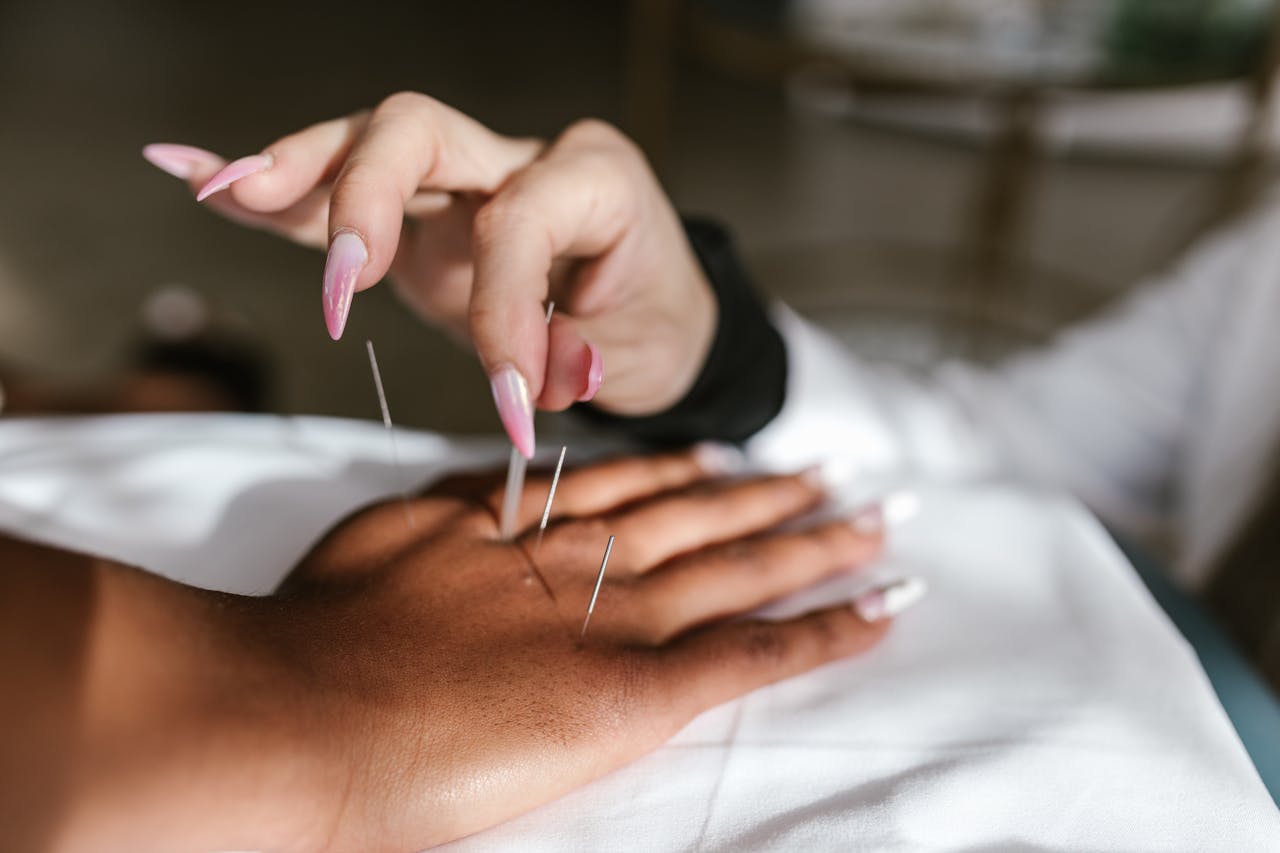
Table of Contents
Originating in traditional Chinese medicine, acupuncture is a technique that uses small sterile needles inserted into the skin to treat multiple health conditions, including neck pain, back pain, headaches, and nausea. Traditional acupuncture is used to balance the body's energy flow called Qi. Acupuncture, from a western view, stimulates nerves and muscles and releases chemicals such as endorphins to relieve pain and help with various health conditions.
Key Takeaways
- Definition: Acupuncture is a technique from traditional Chinese medicine and oriental medicine, part of complementary and alternative medicine, using small needles inserted into the skin to treat various health conditions.
- Mechanism: Involves stimulating the central nervous system, nerves, and muscles, releasing endorphins, and improving circulation to relieve pain and promote healing.
- Uses: Treats conditions like myofascial pain, arthritis, headaches, cancer treatment support, and mental health; includes auricular acupuncture for specific conditions.
- Regulation and Research: Randomized controlled trials support its efficacy; the FDA regulates acupuncture needles.
- Benefits: Provides pain relief, reduces inflammation, supports well-being, and aids breast cancer patients with minimal side effects.
Acupuncture in traditional Chinese medicine
Acupuncture is an ancient technique that originated in traditional Chinese medicine over 2000 years ago. It uses small thin needles inserted into the skin to treat pain, inflammation, and various health conditions. Traditional Chinese medicine uses acupuncture to balance the body's energy flow, called Qi (pronounced "Chi"). In Chinese medicine, it is thought that the disruption of the body's Qi is a significant cause of many illnesses and diseases.
Therefore acupuncture helps to heal and reduce the symptoms of these illnesses and diseases. By promoting energy flow, there is also an increase in blood flow to the body's organs. There are over 2000 specific points called acupuncture points identified in the human body. Acupuncture points are specific areas of the body that affect organs and body systems and target certain illnesses or diseases. These acupuncture points are where the acupuncturist will insert the needles into the skin.
Acupuncture in Western medicine
In western medicine, acupuncture stimulates specific nerves, muscles, and connective tissue, naturally relieving pain. When the acupuncturist inserts needles into the skin, it signals the body to respond. In this way, acupuncture can increase circulation to these areas and help with healing. Acupuncture may stimulate the production of cortisol which regulates inflammation. Acupuncture also releases endorphins which provide natural pain relief. Acupuncture needles may be hooked up and stimulated by tiny electric currents. Acupuncture with electrical stimulation is called electroacupuncture.
Acupuncture treatments are performed by a professional with specific training in acupuncture. They may be called acupuncture practitioners or acupuncturists. In most places, acupuncture is a regulated practice. When finding an acupuncture practitioner, it is essential to ensure that they follow proper infection control practices, including using one-time use sterile needles.
Uses of Acupuncture
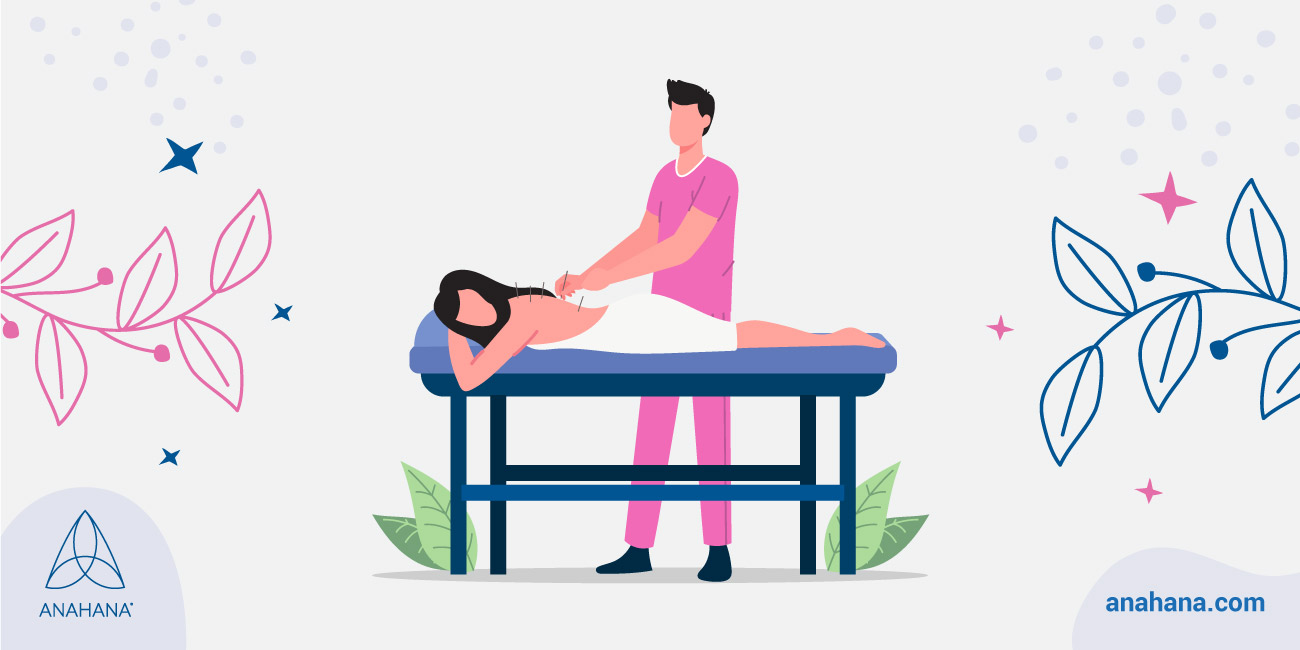 Headaches and Migraines
Headaches and Migraines
Acupuncture treatment is beneficial for many conditions. One common use of acupuncture is treating headaches, including migraines or tension headaches. Acupuncture for migraines or headaches may include inserting acupuncture needles into acupuncture points that relax the neck muscles and relieve neck stiffness. Acupuncture releases endorphins, which work as the body's natural painkillers and help reduce headaches or migraines. Acupuncture also increases blood flow to the muscles around the neck to help reduce tension in that area, which can relieve tension headaches.
Chronic Pain
Acupuncture is also commonly used to treat back pain and neck pain. Acupuncture can treat chronic pain conditions such as chronic low back and acute pain. Studies show that acupuncture is an effective treatment to improve chronic low back pain and neck pain and is a low-risk form of treatment and pain management. An acupuncturist will insert acupuncture needles into specific areas of the body that help to relieve tension and muscle pain in the neck and back.
An acupuncturist will not always insert the acupuncture needles directly into the affected muscles but into the acupuncture points corresponding with the affected area. Acupuncture in the neck and back will also increase circulation to the affected areas and promote healing and relaxation of the muscles.
Arthritis and joint pain
Acupuncture is a treatment that can relieve symptoms of arthritis pain. Acupuncture for arthritis focuses on reducing inflammation of the joints and stimulating the release of hormones that provide natural pain relief. Acupuncture also releases cortisol which has an anti-inflammatory effect on the joints and can relieve joint pain.
Carpal tunnel syndrome is another condition that acupuncture can treat. Research shows that people using acupuncture for carpal tunnel syndrome report a reduction in pain and an improvement in muscle weakness. Studies have also shown that acupuncture for carpal tunnel syndrome decreases inflammation and improves nerve function. Acupuncture can also treat nerve pain, such as sciatica.
Nausea and menstrual cramps
People also use acupuncture as an alternative treatment for nausea and menstrual cramps. There is also evidence of acupuncture helping treat pain and the side effects of cancer treatments.
Mental Health
Some people may find acupuncture to have a relaxation effect and seek acupuncture for stress management. Other people have reported feeling increases in mood and energy after having acupuncture. Lastly, acupuncture can benefit people with mood disorders such as depression, as research supports acupuncture's positive effects on reducing symptoms of depression.
Not every person responds to acupuncture similarly, and effectiveness can vary from person to person. It may take a couple of sessions for some people to see if acupuncture is a good fit for them and their condition.
What is the benefit of acupuncture?
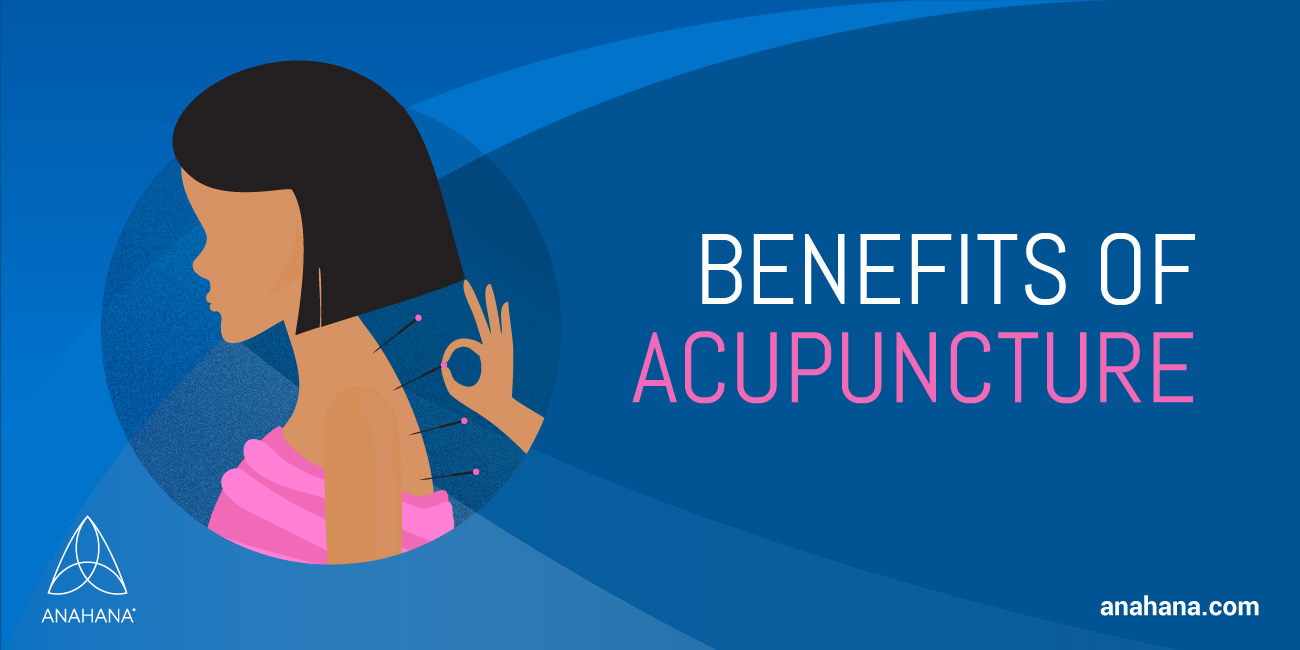 Medical acupuncture has many benefits as it treats a wide variety of health conditions. Many people turn to acupuncture as an alternative medicine to treat many conditions and as it carries very few risks and side effects. Acupuncture is a noninvasive method to relieve pain, including acute and chronic pain. Acupuncture can also complement conventional treatments.
Medical acupuncture has many benefits as it treats a wide variety of health conditions. Many people turn to acupuncture as an alternative medicine to treat many conditions and as it carries very few risks and side effects. Acupuncture is a noninvasive method to relieve pain, including acute and chronic pain. Acupuncture can also complement conventional treatments.
Another benefit of acupuncture is that it can treat multiple conditions within the same acupuncture session. Acupuncture releases endorphins which can both relieve pain and improve mood. Many people find that acupuncture promotes relaxation and balance and is an effective form of stress management. For some, acupuncture may also be energizing.
What are the risks of acupuncture?
Acupuncture is usually a low-risk procedure with minimal side effects. The most common side effects include:
- Mild bruising at the needle insertion areas.
- Some general soreness.
- Mild bleeding at the insertion areas.
Some people might not be the most suited for acupuncture, specifically if they have a bleeding disorder, as there can be an increased risk of bruising or bleeding. You must also ensure that your acupuncturist uses sterile single-use needles to prevent the risk of infection.
What to expect from acupuncture?
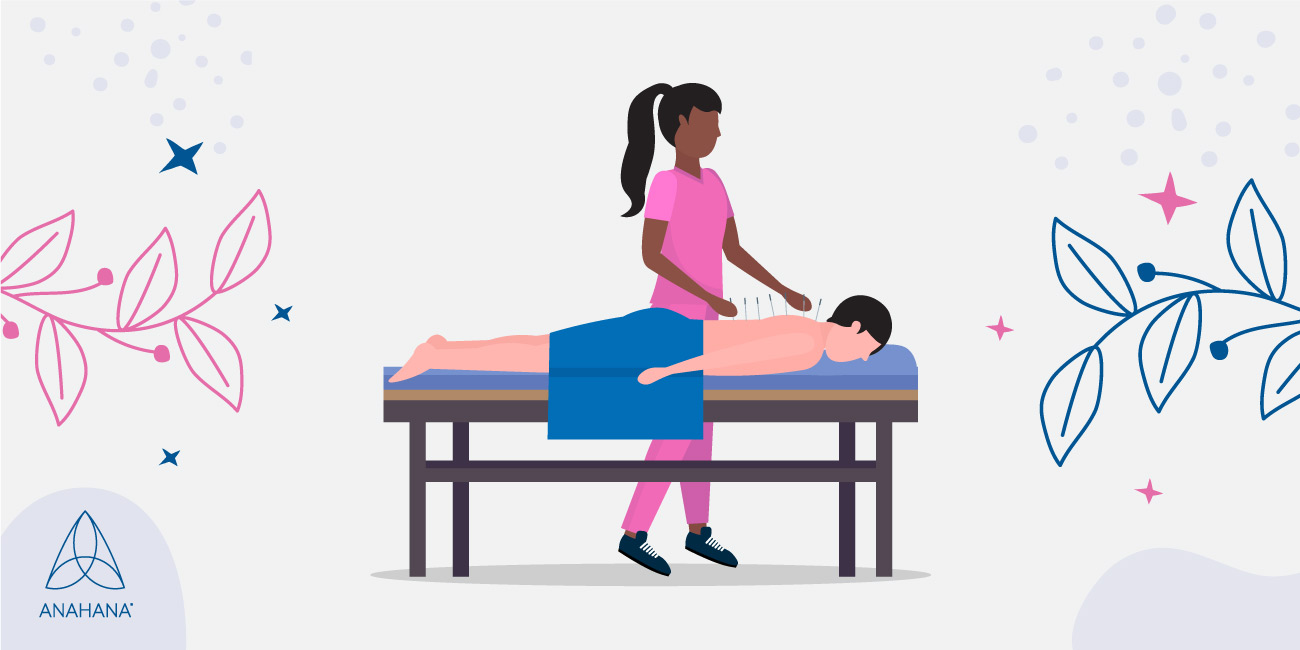 Overall, an acupuncture treatment usually lasts from about an hour to an hour and a half. At the beginning of the appointment, the acupuncturist will assess and discuss the client's concerns and goals for the session before inserting the acupuncture needles. Before beginning the session, bring a list of any concerns or questions you can discuss with your acupuncturist.
Overall, an acupuncture treatment usually lasts from about an hour to an hour and a half. At the beginning of the appointment, the acupuncturist will assess and discuss the client's concerns and goals for the session before inserting the acupuncture needles. Before beginning the session, bring a list of any concerns or questions you can discuss with your acupuncturist.
Typically, the client will be sitting or lying down during the acupuncture treatment appointment. The acupuncturist will insert single-use sterile needles into specific areas of the body. The thin needles are usually inserted with a plastic guide tube. The acupuncturist may manipulate the needles gently with their hand, called manual acupuncture. A person may feel mild stinging or tingling with the insertion of the needles. While the acupuncturist is manipulating the needles, a person may feel a dull ache around the insertion area. It is unlikely to feel much more than slight discomfort as acupuncture uses very thin needles.
Typically the needles will be inserted for 20-60 minutes, depending on the treatment. The number of treatments can range from once or twice a week, depending on the condition and the progress.
Frequently asked questions about acupuncture.
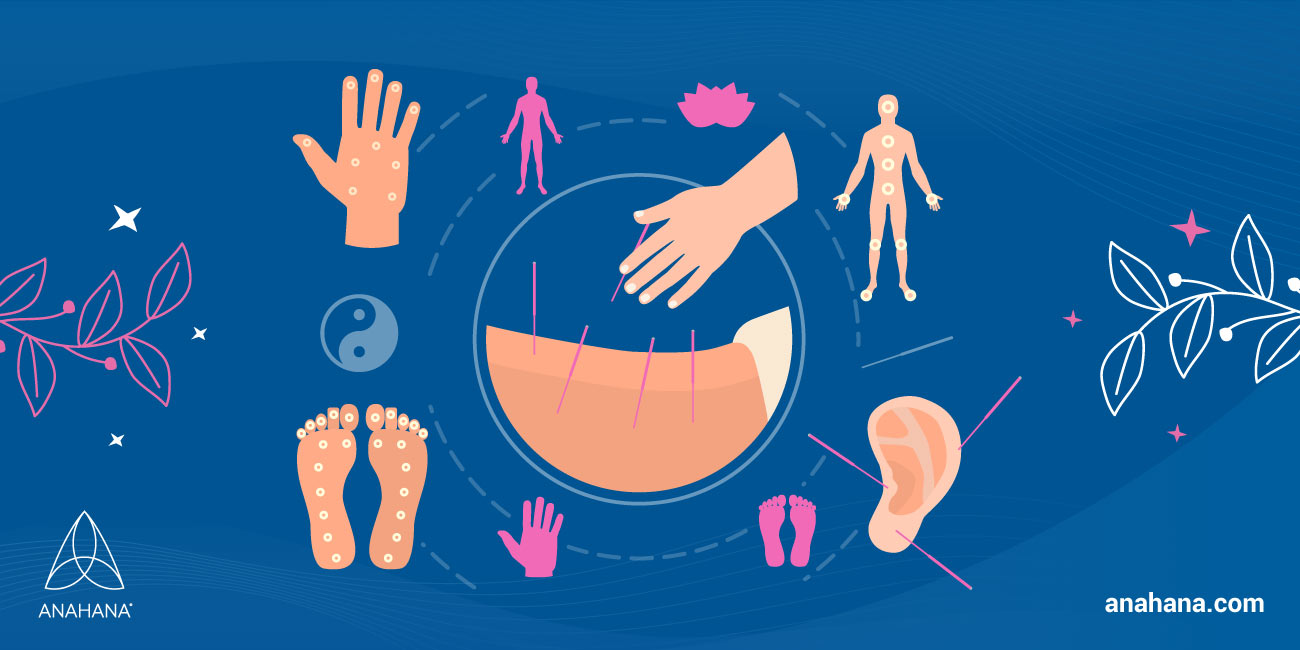 What are acupuncture needles made of?
What are acupuncture needles made of?
Acupuncture needles are very thin needles, most commonly made of stainless steel. Acupuncture needles can also be made of silver or gold. They may come with plastic guide tubes, which help with needle insertion. As acupuncture needles are medical devices, they should only be used once and then disposed of to ensure that acupuncturists always use sterile needles.
Is there an age limit for acupuncture?
Acupuncture can be beneficial for people of a wide range of ages. Some acupuncture practitioners specialize in children's acupuncture, called pediatric acupuncture. Acupuncture treatments can also benefit the elderly and are generally safe alongside other treatments for older age groups.
What are the acupuncture points?
Acupuncture points are specific locations on the body that are believed to be particularly receptive to stimulation from needles or other forms of acupressure. These points, known as 'acupoints' or 'acupuncture points,' are seen as vital for restoring balance and health in Traditional Chinese Medicine (TCM). Acupuncture points are located along energy channels called meridians, which run throughout the body connecting internal organs with the skin’s surface.
Each acupuncture point has a distinct location, name, and number associated with it. The most commonly used points are found on the head, arms, hands, legs and feet. Stimulating these areas is believed to help restore balance and regulate the flow of qi (energy) throughout your body.
How does acupuncture feel?
The needle insertion in the acupuncture treatment session will likely feel like a slight prick, possibly with some tingling depending on the acupuncture point. The needles are inserted quickly and are very thin needles; therefore, the feeling will be much more mild compared to an immunization needle. Once the acupuncture needle is inserted into the correct depth, it is common to feel a dull ache or a slight tingling sensation. Overall the sensation of acupuncture needles is usually very tolerable.
Where to get acupuncture treatment?
If you're looking for an acupuncture treatment, there are many places that offer it. You can find a certified acupuncturist at a holistic health center, medical spa, or wellness clinic. Most larger cities will have multiple options available. You can also search online for practitioners in your area and read reviews from their customers before making a decision. Acupuncture is becoming increasingly popular, so finding a qualified practitioner should be relatively easy.
Before getting your first treatment, it's important to research what kind of practitioner you'd like to work with and the types of treatments available. Be sure to ask questions about their qualifications, experience, and approach during your initial consultation or phone call, so you feel comfortable with the practitioner you choose. Taking time to find the right fit will ensure you get the most benefit from each acupuncture session.
Resources
Acupuncture: How it works, uses, benefits, and risks
Acupuncture: What You Need To Know | NCCIH
Traditional Chinese Medicine: What You Need To Know | NCCIH
Acupuncture for Headaches and Migraines: How It Works
Acupuncture for back pain? - Mayo Clinic
Acupuncture May Be Best to Ease Neck Pain
Can Acupuncture Help Relieve Arthritis Pain?
Relieving pain with acupuncture - Harvard Health.
The Anatomy Of An Acupuncture Needle
Disclaimer
The contents of this article are provided for informational purposes only and are not intended to substitute for professional medical advice, diagnosis, or treatment. It is always recommended to consult with a qualified healthcare provider before making any health-related changes or if you have any questions or concerns about your health. Anahana is not liable for any errors, omissions, or consequences that may occur from using the information provided.

By: Anahana
The Anahana team of researchers, writers, topic experts, and computer scientists come together worldwide to create educational and practical wellbeing articles, courses, and technology. Experienced professionals in mental and physical health, meditation, yoga, pilates, and many other fields collaborate to make complex topics easy to understand. Anahana is also home to specialists in crystals, tarot, angel numbers, astrology, life path numbers, zodiac signs, and horoscopes. By combining evidence-based wellness with spiritual and energetic practices, the team offers clear, trustworthy guidance for both mind-body health and modern spirituality.